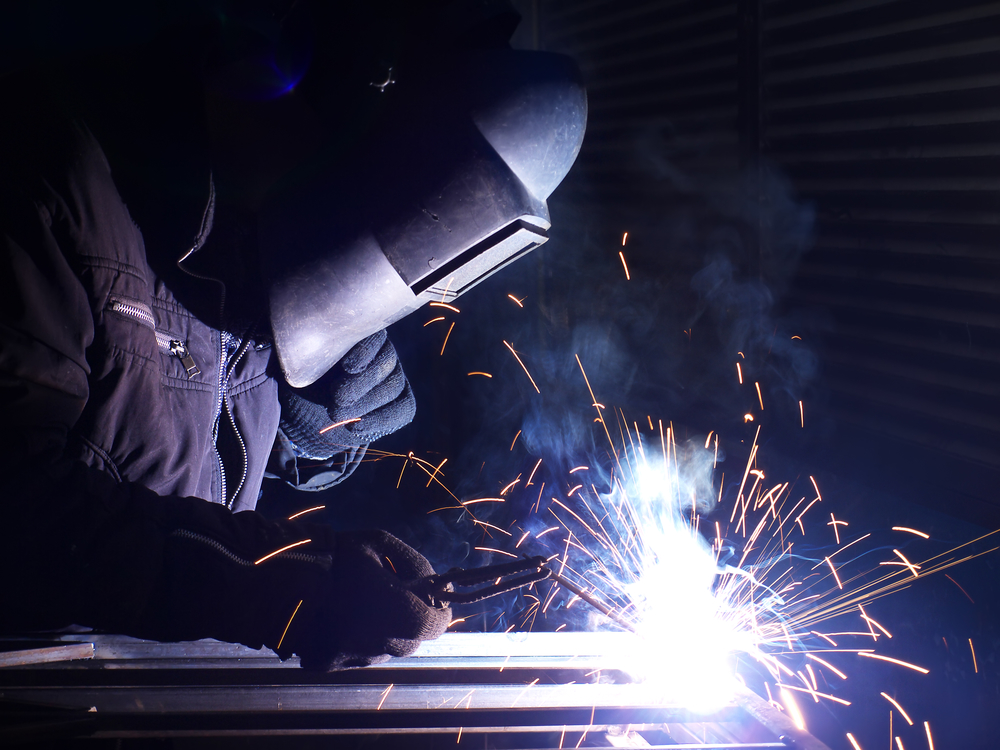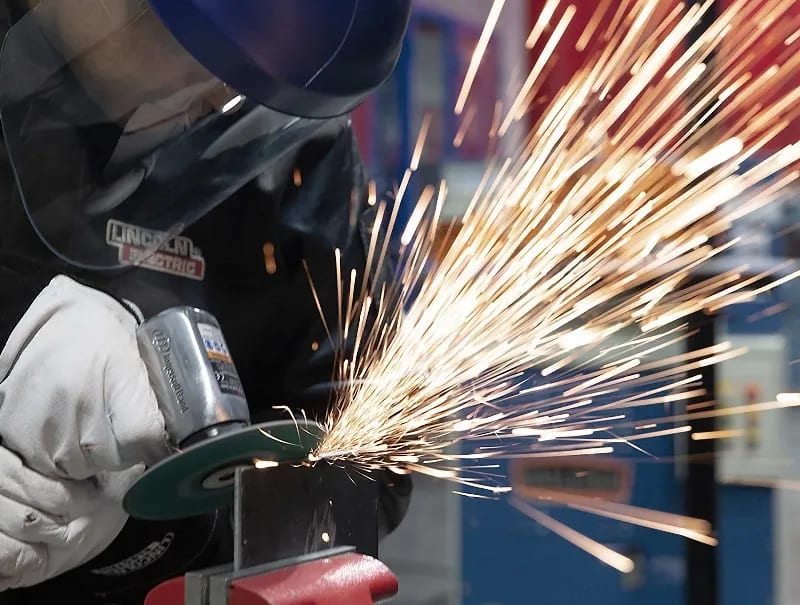Usual Welding Repair Issues and Just How to Address Them Efficiently
Welding repair services frequently encounter an array of problems that can endanger the honesty of the final product. Common troubles consist of inadequate penetration, porosity, and misalignment, amongst others. Each problem provides distinct obstacles that call for details methods for resolution. Understanding these issues is essential for welders aiming to enhance their abilities and end results. This conversation will discover these usual welding fixing problems and effective methods to address them.
Poor Penetration
Inadequate infiltration takes place when the weld steel fails to completely fuse with the base material, resulting in weak joints and prospective structural failures. This problem commonly stems from insufficient heat input, incorrect electrode angle, or inappropriate welding speed. Welders may come across inadequate penetration because of a miscalculation of the needed specifications for a specific product thickness or type. Additionally, contamination on the base material's surface area can hinder reliable bonding, aggravating the problem. To resolve poor penetration, welders should assure suitable settings on their tools and keep a tidy work surface area. Normal assessment of welds is suggested to identify any type of shortages early, enabling for timely adjustments and the avoidance of compromised architectural honesty in welded assemblies.
Porosity
Porosity is a common issue in bonded joints that materializes as tiny gas bubbles entraped within the weld metal. This flaw can compromise the honesty of the weld, bring about minimized strength and potential failing under stress and anxiety. Montana Mobile Welding and Repair Welding. Porosity generally develops from contamination, wetness, or improper welding strategies, which allow gases to run away into the molten weld swimming pool. To resolve porosity, welders must ensure appropriate surface area prep work, keep a tidy working environment, and make use of suitable welding criteria. In addition, choosing the right filler material and protecting gas can alleviate gas entrapment. Regular assessment and screening of welds can aid determine porosity early, ensuring timely restorative activities are taken, thereby preserving the quality and dependability of the welded structure
Misalignment
Misalignment in welding can arise from various elements, consisting of improper configuration and thermal development. Comprehending the origin is crucial for efficient resolution. Several adjustment methods are readily available to straighten parts and guarantee structural stability.
Reasons of Misalignment
Welding misalignment often comes from a range of underlying concerns that can compromise structural stability. One primary reason is incorrect fit-up of elements prior to welding, which can lead to spaces and irregular surface areas. Variations in thermal growth throughout the welding procedure can likewise result in distortion, especially if the materials being joined have different coefficients of development. In addition, inadequate fixturing and securing may stop working to hold parts safely in position, causing activity during welding. Inadequately conserved devices, including welding devices and devices, may present incongruities in the weld grain, more adding to misalignment. Driver error, stemming from inadequate training or experience, can likewise play a substantial duty in producing misaligned welds.

Adjustment Techniques Readily Available
Attending to misalignment effectively calls for a mix of rehabilitative techniques customized to the particular concerns at hand. One common approach is making use of jigs or components to hold parts in the appropriate setting throughout welding, making certain regular positioning. Furthermore, pre-heating the materials can help reduce distortion and enhance fit-up. For significant imbalance, mechanical realignment methods, such as using hydraulic jacks or clamps, can be used to correct the placement before welding. Post-weld heat treatment might additionally be needed to relieve tensions caused by misalignment. Finally, mindful examination and change during the setup stage can prevent misalignment issues from becoming substantial issues, promoting a smoother welding process and improving overall architectural integrity.
Distortion
Distortion is an usual challenge in welding that can arise from different aspects, including uneven heating & cooling. Comprehending the causes of distortion is vital for applying reliable prevention techniques. Resolving this problem not just improves architectural stability yet also improves the general high quality of the weld.
Causes of Distortion
When subjected to the intense warm of welding, materials commonly go through adjustments that can bring about distortion. This sensation mostly occurs from thermal expansion and contraction throughout the welding procedure. As the weld area warms up, the product expands; upon cooling, it gets, which can develop internal anxieties. On top of that, uneven home heating throughout a work surface can intensify these tensions, leading to bending or flexing. The kind of product likewise plays a substantial role; metals with differing thermal conductivity and coefficients of development may react in a different way, leading to unpredictable distortions. In addition, inadequate joint layout and poor fixturing can contribute to imbalance during welding, enhancing the possibility of distortion. Understanding these causes is vital for effective welding repair work and prevention approaches.
Avoidance Techniques
Reliable prevention techniques for distortion during welding concentrate on regulating heat input and ensuring correct joint style. Preserving a regular heat input assists to lessen thermal growth and contraction, which can web result in distortion. Using strategies such as preheating the workpiece can also minimize the temperature slope, promoting uniform heating. In addition, selecting appropriate joint styles, such as T-joints or lap joints, can boost security and minimize stress and anxiety focus. Applying proper fixturing to secure the work surfaces in location better help in preserving placement throughout the welding process. Lastly, staggered welding sequences can disperse heat more evenly, preventing localized distortion. By using these techniques, welders can considerably lower the chance of distortion and boost the total top quality of their welds.
Cracking
Cracking is a typical problem encountered in welding fixings, commonly arising from different elements such as incorrect air conditioning prices, product option, or insufficient joint preparation. The occurrence of fractures can significantly jeopardize the stability of the weld, resulting in prospective failings throughout operation. To address this concern, welders must initially analyze the source, guaranteeing that materials are suitable and properly chosen for the specific application. Additionally, regulating the cooling price throughout the welding process is crucial; fast cooling can cause anxiety and lead to cracking. Appropriate joint design and prep work likewise add to reducing the risk. Executing these methods can improve weld quality and durability, eventually reducing the possibility of fracturing in completed weldments.

Insufficient Fusion
A substantial concern in welding fixings is insufficient fusion, which happens when the weld steel does not effectively bond with the base product or previous weld passes - Fabrication. This flaw can lead to weak points in the joint, potentially endangering the honesty of the welded structure. Elements adding to incomplete blend consist of insufficient warmth input, inappropriate welding method, and contamination of the surfaces being joined. To address this problem successfully, welders need to assure appropriate pre-weld cleaning and surface area preparation, along with adjust their welding criteria to accomplish sufficient penetration and fusion. Routine examination argon near me throughout the welding procedure can also assist recognize insufficient blend early, permitting prompt corrective steps to boost the total top quality of the i loved this weld
Overheating
While welding fixings can boost structural honesty, overheating provides a significant obstacle that can result in product degradation. Extreme warmth throughout welding can change the mechanical properties of metals, resulting in decreased strength, increased brittleness, and bending. This sensation is specifically critical in high-stress applications where architectural integrity is critical. Identifying getting too hot can include aesthetic inspections for staining or distortion, as well as keeping track of temperature level throughout the welding procedure. To mitigate the threats connected with getting too hot, welders must employ suitable techniques, such as managing heat input, adjusting travel speed, and utilizing suitable filler materials. Furthermore, applying pre- and post-weld warmth treatments can help restore material residential properties and enhance the total quality of the repair work, making sure lasting efficiency and safety.
Frequently Asked Questions
What Are the Common Signs of a Welding Problem?

Exactly How Can I Check My Welds for Quality?
To check welds for top quality, one can utilize visual examinations, ultrasonic testing, and radiographic methods. Each strategy guarantees architectural integrity, determines issues, and confirms adherence to specified requirements, inevitably boosting the integrity of the bonded joints.
What Security Safety Measures Should I Take While Welding?
When welding, one should prioritize safety and security by putting on suitable individual protective equipment, ensuring proper air flow, protecting flammable materials away, maintaining a tidy workspace, and knowing environments to avoid crashes and injuries.
Can I Fix a Weld Without Redoing the Entire Joint?
Fixing a weld without redesigning the entire joint is possible, depending upon the damage (Montana Mobile Welding and Repair). Strategies such as grinding, including filler material, or making use of a welding procedure can successfully attend to details imperfections while protecting the bordering framework
What Equipment Are Crucial for Efficient Welding Fixes?
Essential tools for effective welding repair work include a welding equipment, wire brush, mill, protective gear, clamps, and filler products. Each tool plays an important role in guaranteeing top quality and safety throughout the fixing process. Porosity usually emerges from contamination, wetness, or improper welding methods, which permit gases to escape into the molten weld pool. Inadequately kept devices, including welding makers and tools, may introduce incongruities in the weld bead, more contributing to misalignment. When subjected to the intense warm of welding, products often go through adjustments that can lead to distortion. Splitting is a common problem experienced in welding repair services, commonly resulting from numerous factors such as incorrect air conditioning rates, material option, or poor joint prep work. A substantial problem in welding repair services is insufficient blend, which takes place when the weld metal does not adequately bond with the base product or previous weld passes.